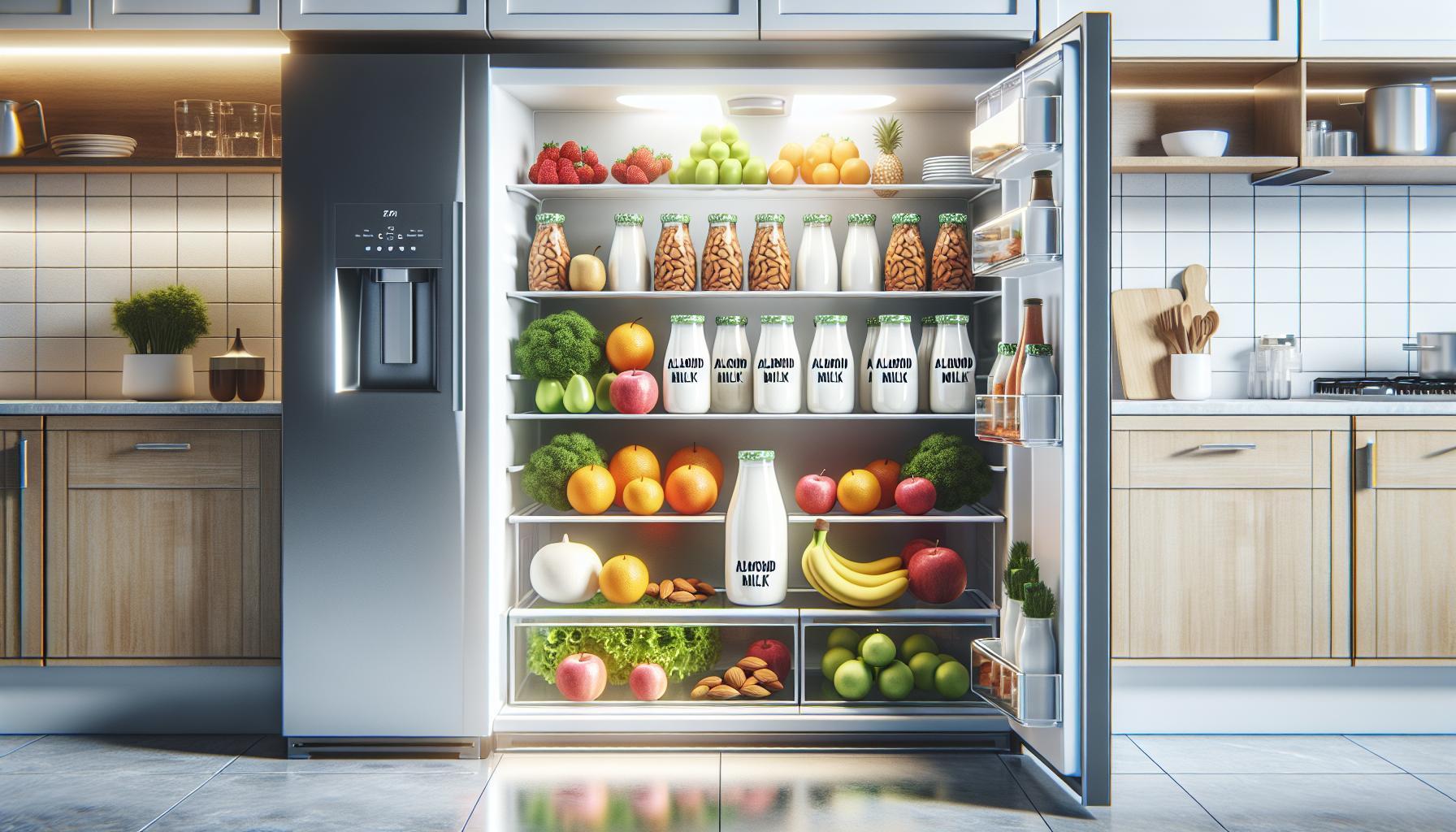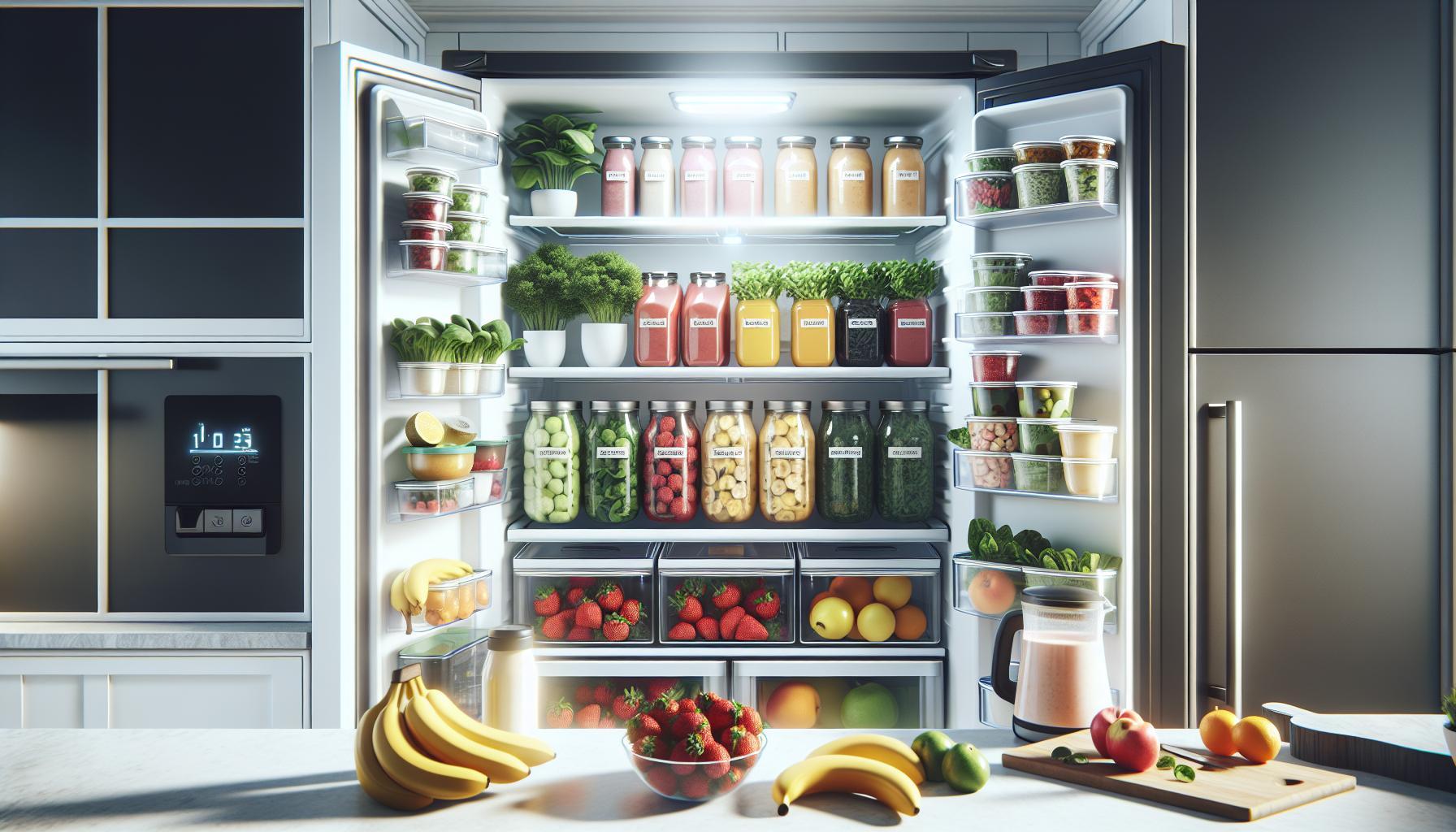Did you know that the way you store beer can significantly affect its taste and freshness? Whether you’re a casual drinker or a true beer enthusiast, understanding how long beer lasts in the fridge is crucial to enjoying every sip. Proper storage can extend the life of your brews and enhance your tasting experience, but forgetting about that six-pack or not knowing how long it’s safe to keep it cold can lead to disappointment.
As you embark on a journey to savor the perfect pint, it’s important to recognize what factors influence beer longevity. Factors like beer type, packaging, and temperature can all play a role in determining how long your beer can stay fresh. By knowing these details, you can ensure that each time you reach for a cold one, it’s as delightful as the day you bought it. Dive in to discover practical guidelines and tips that will help you make informed decisions about maximizing your beer’s shelf life.
How Long Does Beer Last in the Fridge?
Storing beer in the fridge can significantly extend its shelf life, allowing you to enjoy every sip without compromising flavor. Generally, beer can last up to six months in the fridge if stored properly, although some styles may benefit from an even longer duration. For example, many light lagers and pilsners are best consumed fresh, while certain stouts or barrel-aged beers can often mature and improve over a year when kept cold.
To maximize freshness, it is recommended to keep beer at a consistent temperature of around 45-55°F (7-13°C). This range helps preserve the flavors and aromas, preventing a breakdown of the beer’s quality. A well-organized refrigerator, where light exposure and temperature fluctuations are minimized, can help maintain the integrity of your brews. For beers with a high alcohol content, such as imperial stouts or double IPAs, they can remain enjoyable for longer periods, sometimes exceeding a year when stored correctly.
Storage Tips for Beer:
- Keep bottles upright to minimize oxidation and prevent yeast sediment from mixing with the liquid.
- Avoid light exposure, especially from sunlight, as it can produce off-flavors and spoilage.
- Do not freeze beer, as it can alter the taste and cause packaging to break.
It’s important to note that once opened, beer should ideally be consumed within a few days for the best flavor. Though refrigeration slows down spoilage, oxygen exposure can lead to deterioration hastily. By understanding how long beer can last in the fridge and adhering to proper storage techniques, you can savor your favorite beverages without a worry.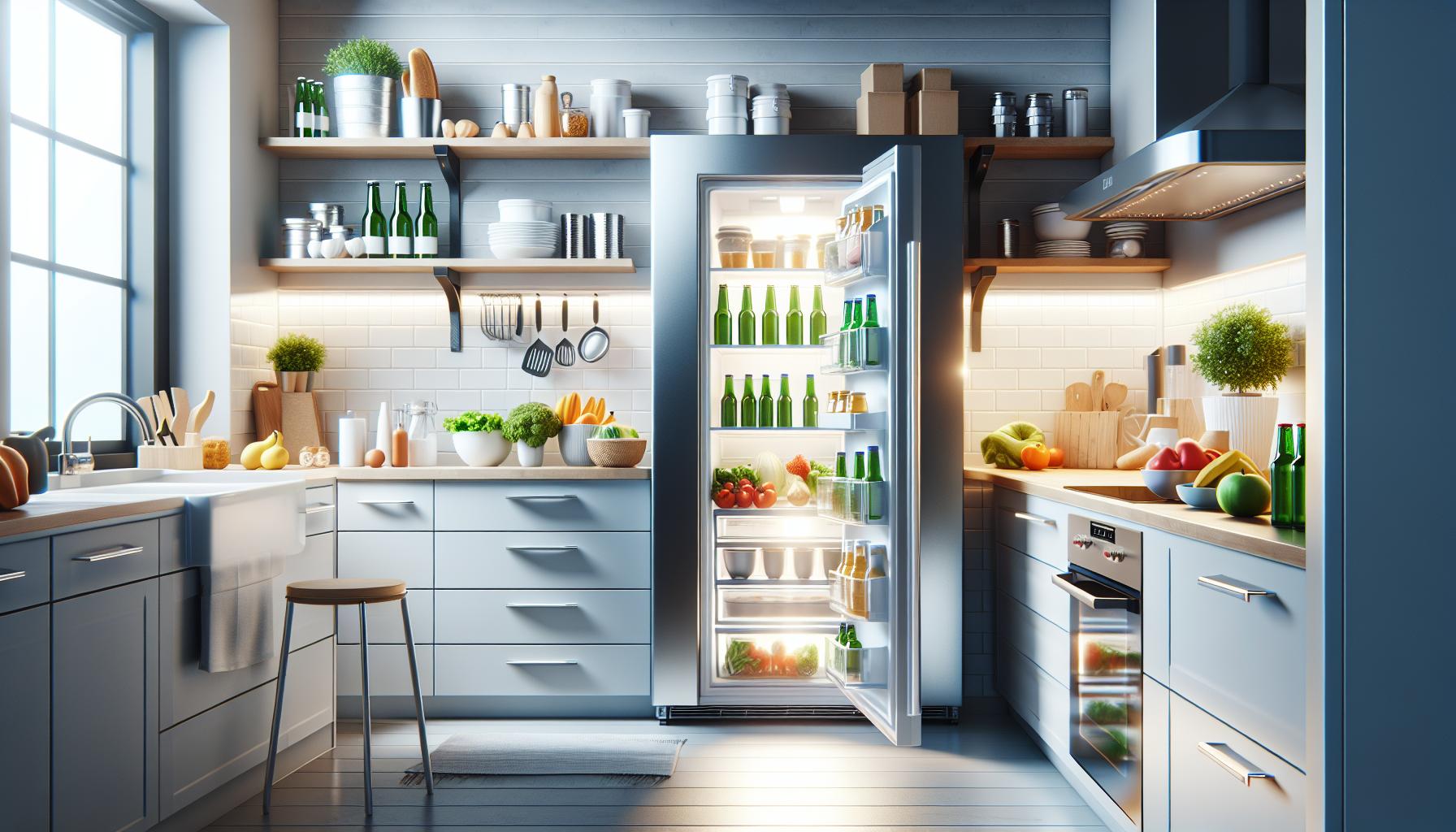
Understanding Beer Expiration Dates
Understanding the timeline associated with beer expiration is crucial for maintaining its quality and freshness. While beer doesn’t spoil in the same way perishable food does, it does have a shelf life, which varies depending on the type and storage conditions. Most commercially produced beers have a “best by” or “enjoy by” date printed on the label, which serves as a guideline for peak flavor and quality. This date typically ranges from a few months to a year after bottling, depending on the beer style.
It’s essential to grasp that these expiration dates are based on the beer’s production and formulation. Light lagers, for instance, are best consumed fresh, often within three to six months of purchase, while heavier styles such as stouts or barleywines can age gracefully for a year or even longer when stored in proper conditions. Remember that while the beer might still be safe to consume after the expiration date, the taste and aroma can start to degrade, leading to less enjoyable drinking experiences.
To ensure you’re enjoying beer at its best, practice good storage habits. Store unopened beer upright, as this reduces oxidation and prevents sediment from floating in the beer. Additionally, maintain a consistent temperature-ideally between 45-55°F (7-13°C)-and keep the beer away from light, which can spoil the flavors.
It also helps to check if the beer has been kept in optimal conditions since purchase. If you find bottles in the back of the fridge that are past their date, they may not taste as great as when fresh, but they could still be acceptable depending on the type. Understanding these nuances can enhance your beer-drinking experience by helping you make informed decisions with every sip.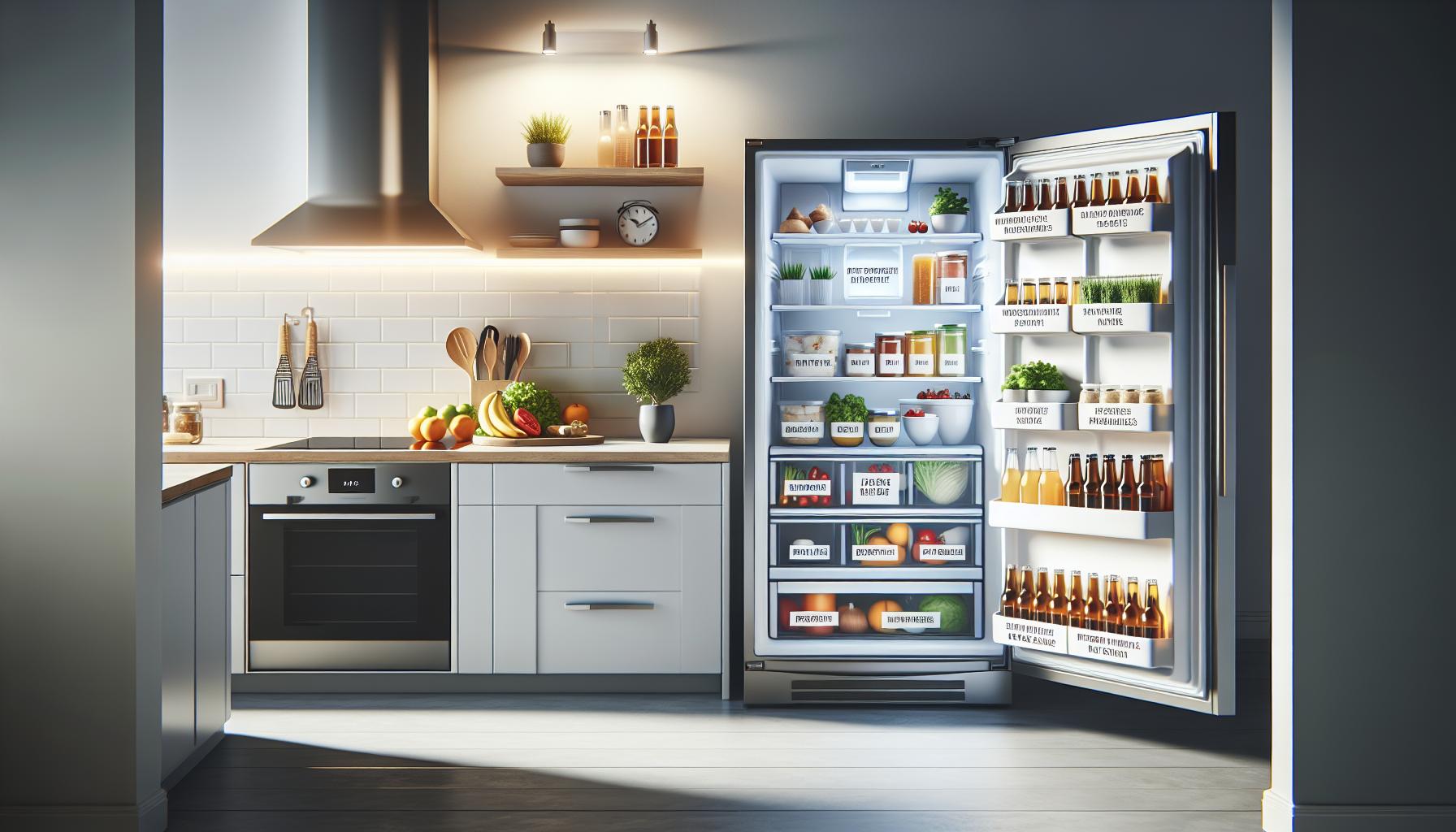
Optimal Beer Storage: Tips and Tricks
Storing beer correctly can significantly enhance your drinking experience, ensuring each sip remains as flavorful and refreshing as possible. Proper beer storage focuses on maintaining an optimal environment that protects the beer from light exposure, temperature fluctuations, and oxidation. By following a few simple guidelines, you can prolong the life of your beer and enjoy it at its best.
First, always store your beer in a cool, dark place, ideally between 45-55°F (7-13°C). If you choose to keep beer in the fridge, try to maintain a consistent temperature and avoid frequent opening and closing of the door to minimize temperature swings. Consider designating a specific shelf in the fridge solely for your beer to further regulate its environment. Additionally, keep beer upright to prevent the cap from coming into contact with the liquid, which can lead to oxidation and spoilage.
When it comes to purchasing beer, consider its intended consumption timeframe. Lighter beers, such as lagers and wheat beers, are best enjoyed fresh-typically within three to six months of purchase. Conversely, stronger ales like stouts and barleywines can benefit from aging, remaining drinkable for one year or more if stored properly. Be sure to check the “best by” dates on labels and prioritize consuming the older stock first to minimize waste.
To protect your beer further, limit its exposure to light, especially UV light, which can cause skunky flavors in certain beer styles. If you’re not consuming beer immediately, keep it in its original packaging, as this offers additional protection against light. Consider investing in beer-specific storage solutions, like a dedicated beer fridge, designed to maintain the perfect environment. Following these tips will ensure that your beer stays fresh and enjoyable, sip after sip.
The Impact of Beer Type on Freshness
Different types of beer have varying lifespans in terms of freshness, largely influenced by their ingredients, alcohol content, and brewing methods. While it may be tempting to think all beers can sit in your fridge indefinitely, understanding the distinctions among beer types can significantly enhance your drinking experience.
Lighter styles, such as lagers and wheat beers, generally shine when enjoyed fresh. These beers often have a more delicate flavor profile that can fade over time, making them best consumed within three to six months of purchase. The crisp and refreshing nature of these beers can diminish, resulting in a less satisfying experience if they are stored too long. To enjoy these beers at their finest, it’s advisable to prioritize freshness when selecting options at the store.
On the other hand, stronger beers like stouts, porters, and barleywines can actually benefit from aging, allowing their complex flavors to develop further. These beers often have higher alcohol content and richer flavor profiles, which can make them enjoyable for a year or even longer if stored properly. While many may think that a longer shelf life means they can be forgotten, it’s crucial to check specific guidelines for each style, as not all beers are meant to age. To maximize their potential, store these beers in a controlled, consistent environment away from direct light and temperature fluctuations.
In summary, recognizing can help you make informed decisions about storage and consumption. As a guideline, follow these general timeframes based on beer styles:
- Lagers and Wheat Beers: Best within 3-6 months
- IPAs: Best within 3-4 months for optimal hoppiness, though some can age for a shorter time depending on style
- Strong Ales (e.g., Barleywines, Stouts): Enjoyable for 1 year or more
By being mindful of these factors, you can ensure that you enjoy every sip of your beers, relishing their full, intended flavors.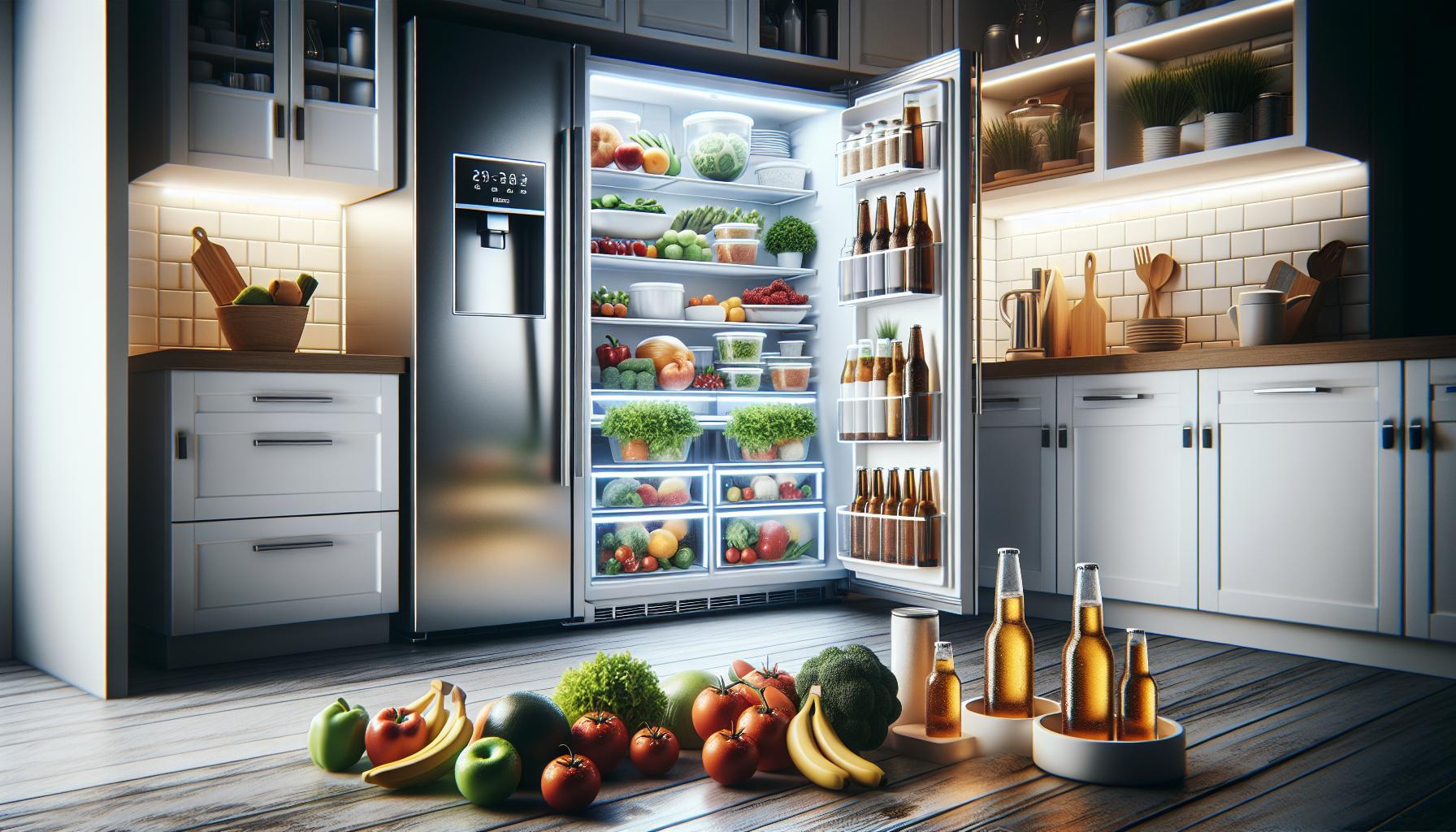
Signs Your Beer Has Gone Bad
The life of any beer isn’t infinite, and sometimes it’s easy to overlook the signs that your brew has gone bad. Understanding how to recognize these indicators can save you from an unpleasant experience. One of the most apparent signs is a change in taste; if your beer has developed a sour, off-flavor, or tastes excessively bitter, it might have expired. The freshness that makes your favorite ale or lager enjoyable can degrade due to oxidation or contamination, resulting in flavors that are far from what you expect.
Another key indicator lies in the beer’s appearance. When poured, if you notice a cloudy texture or significant sediment, your beer may have spoiled. Fresh beers are typically clear unless they are intentionally unfiltered, and a hazy appearance can suggest yeast or other elements have gone rogue. Additionally, if you detect an unusual odor, such as vinegar or a musty scent, it’s a strong indication that the beer is no longer fit for consumption.
Lastly, pay attention to carbonation levels. Flat beer, caused by a loss of carbonation, can arise from age or improper storage. If your bottle or can doesn’t produce any fizz upon opening, it may be time to part ways with it.
To ensure a safe and pleasant drinking experience, regularly check for these warning signs, and when in doubt, it’s best to dispose of any beer that seems off. Storing beer properly-and knowing when it’s past its prime-will help you savor every sip without the worry of an unpleasant surprise.
The Science of Beer: Freshness vs. Flavor
The intricate relationship between beer’s freshness and flavor is rooted in its ingredients and the brewing process. Freshness not only refers to the beer’s age but also significantly impacts taste, aroma, and overall drinking experience. Beer contains various compounds-including hops, malt, and yeast-that can degrade over time, leading to noticeable changes in flavor. When assessing how long beer lasts in the fridge, it’s essential to understand that different types of beer have distinct shelf lives and flavor profiles that react differently to aging.
Light beers and hop-forward varieties, such as IPAs, benefit from being consumed fresh. The vibrant hop aromas and flavors can diminish significantly within a few months, often leading to a less enjoyable taste experience. On the other hand, some darker or higher-alcohol beers, like stouts or Belgian ales, can evolve positively with age, developing richer, more complex flavors over time. This difference is crucial when considering how to store and when to enjoy your selections.
To prolong the freshness of your beer, proper storage is vital. Beer should ideally be kept in a refrigerator, away from light, and at consistent temperatures to minimize oxidation and spoilage. A range of six months to two years is a general guideline for bottled beers stored in the fridge, but always check for specific expiration dates whenever possible. It’s also advisable to store beer upright to reduce the surface area exposed to air, which is essential for preserving flavor integrity.
Recognizing when beer has reached its prime is key. Look for signs such as faded aromas, off-flavors, or flat carbonation, which indicate that the freshness has ebbed away, adversely affecting the flavor profile. Understanding the science behind beer freshness not only enhances the enjoyment of each sip but also helps you make informed decisions on how to best savor your favorite brews over time.
How to Properly Seal and Store Beer
To maintain the quality and flavor of your beer, proper sealing and storage techniques are essential. An astounding percentage of beer lovers do not realize that the way they store their beverages can greatly influence their taste and longevity. While many assume that beer can simply be thrown in the fridge without care, following specific guidelines ensures that every sip delivers optimal enjoyment.
First and foremost, the ideal storage temperature for most beers is between 45°F and 55°F (7°C – 13°C). However, once opened, beer should be returned to the refrigerator promptly and consumed within a few days to maintain its freshness. Sealing opened beer correctly is also crucial. If you have leftover beer, using a quality bottle stop or a vacuum seal will help minimize oxidation, which can lead to off-flavors. While some craft beer enthusiasts pursue various brewing styles that thrive on complex aging, most beers (especially IPAs and light ales) should be consumed fresh.
When it comes to unopened beer, store it upright in a cool, dark place away from direct sunlight and heat sources to prevent degradation. Light and warmth can significantly alter the integrity of beer, causing skunking and flavor loss. Most bottled beers, under proper conditions, can last from six months up to two years, depending on their style. Using a dedicated beer fridge or a temperature-controlled environment can help maintain consistent temperatures, ensuring that your beer remains stable and enjoyable over time.
Lastly, regularly check for expiration dates or “best by” recommendations typically found on labels. Understanding the nuances of your favorite brew can make a significant difference. By investing in proper storage practices, you can enjoy your beer at its best, making every gathering or quiet evening a flavorful experience.
Enjoying Leftover Beer: Safe Practices
When you find yourself with leftover beer after a gathering or an evening of relaxation, it’s essential to handle it properly to ensure that every sip remains enjoyable. Beer, much like other perishable goods, has its own lifespan, particularly once it has been opened. To keep your beer tasting great, follow some simple and effective safety practices.
First, consume opened beer within three to four days. After this time frame, oxidation and exposure to air can lead to stale flavors and a loss of carbonation. To minimize oxidation, always recork or reseal your beer promptly after pouring. Investing in a quality bottle stopper or vacuum sealer can help preserve the freshness and flavor of your beer. Store any remaining beer standing upright in the refrigerator, which helps lessen the contact between the beer and the air above it, reducing oxidation potential.
Be mindful of the signs that your leftover beer might not be safe to drink. If you notice off smells, unusual changes in taste, or a flat appearance, it’s best to err on the side of caution and discard it. When it comes to enjoying that last sip, look for fresh aromas and a consistent flavor profile to ensure your beer is still delightful.
For those who tend to have more than one leftover beer on hand, consider organizing your refrigerator to prioritize older brews so you can consume them before they reach their peak freshness. Labeling beers with the date they were opened can also serve as a helpful reminder. Understanding these simple practices will allow you to enjoy leftover beer safely and enhance your prospective beer experience for your next get-together or solo night in.
Refrigeration vs. Room Temperature: What’s Best?
Storing beer properly is crucial for maintaining its flavor and freshness, and the debate between refrigeration and room temperature is a common concern among enthusiasts. When beer is kept at optimal temperatures, its qualities such as taste and aroma can be preserved. Generally, refrigeration is the superior choice, especially once the beer is opened. Storing your brews in the fridge prevents harmful temperature fluctuations that can lead to spoilage and skunky flavors.
Warmer temperatures can accelerate oxidation and increase the rate of flavor degradation. For most beers, especially lagers and IPAs, refrigeration helps lock in the intended taste profile and carbonation levels. Ideally, unopened beer should be stored in a cool, dark place, but once opened, placing it in the fridge is essential. Aim to enjoy opened beers within three to four days, as they can go stale quickly at room temperature due to oxidation.
Conversely, some beers, like specific stouts and barrel-aged varieties, can benefit from being stored at slightly warmer temperatures. In these cases, letting them breathe a little at room temperature can enhance their complex flavors before consuming. However, the key is consistency; avoid exposing these beers to fluctuating temperatures, which can disrupt their aging process.
Ultimately, keeping beer cold, particularly after opening, is safest and ensures you enjoy every sip as intended. Remember that while some craft beers may seem robust enough to handle room temperatures, the general rule is that refrigeration is your best ally in preserving beer quality over time.
Best Practices for Beer Storage After Opening
After you’ve opened a bottle or can of beer, understanding the best practices for storage can make all the difference in preserving its flavor and freshness. Once exposed to oxygen, the beer begins to undergo changes that can compromise its taste. To enjoy every sip, adhere to these essential guidelines:
First and foremost, always seal your beer tightly after opening. If you’re dealing with a bottle, promptly recapping it can help minimize oxidation. For cans, simply make sure the pull tab is as securely closed as possible to limit air exposure. If you want to take extra precautions, consider using a bottle stopper for an airtight seal. This step is vital; beer can stale quickly, typically within three to four days post-opening, so proper sealing is crucial for extending its enjoyable life.
Next, store your opened beer in the refrigerator. Cold temperatures slow down the oxidation process and maintain flavor integrity. While some beer styles, such as robust stouts or barrel-aged varieties, can benefit from slight warming, generally, keeping beers chilled is the safest route. Ensure your fridge maintains a consistent temperature-ideally between 35°F and 45°F (1.6°C to 7.2°C)-to avoid fluctuations that can diminish quality.
When it comes to timing, aim to consume your opened beer within a week to fully appreciate its intended flavors. Each beer type may have a slightly different longevity, but for most cases, a fast consumption approach provides the best taste experience. If you find yourself with leftover beer beyond this window, it’s best to assess its quality visually and by smell before drinking; signs of spoilage, such as off-flavors or unusual aromas, should be taken seriously and can indicate it’s best to discard the remaining contents.
Ultimately, treating your beer with care after opening will ensure you can relish every sip as it was meant to be enjoyed. With these practices, you’ll be on your way to making the most of your brews, celebrating the rich and diverse world of beer in each glass.
Extending the Life of Your Favorite Brews
To ensure you savor every drop of your favorite brews, proper storage techniques are essential. Just like fine wine, beer has a unique character that can easily degrade if not handled with care. One important fact to remember is that light and heat are among the primary adversaries of beer freshness. When exposed to these elements, your beer can develop off-flavors, commonly known as “skunking,” which significantly detracts from its enjoyment.
Optimal Storage Conditions
Aim to store your beer in a cool, dark place. Ideally, the temperature should remain stable and between 35°F and 45°F (1.6°C to 7.2°C). Such conditions help slow down the aging process and prevent oxidation, preserving the intended taste profile of your beer. If you need to keep beer for an extended period, consider investing in a dedicated beer fridge, which can provide the optimal environment without temperature fluctuations.
Additionally, position your bottles upright in the fridge. This method prevents the yeast sediment from coming into contact with the beer, which could impart unwanted flavors. If you’re working with cans, simply ensure they are kept in a similar steady environment.
Understanding Beer Types
Different beer styles have varying shelf lives and storage needs. While hops in IPAs can diminish in flavor over time, stouts and porters might actually benefit from aging due to their robust flavors. For hoppy varieties, enjoy them fresh-ideally within a month of the packaging date. Conversely, you could keep darker beers for several months or even years, depending on the style and brewing process.
Here’s a quick reference for typical shelf lives based on beer types:
| Beer Type | Best By Duration (Refrigerated) |
|---|---|
| IPA | 1-3 months |
| Pilsner | 3-6 months |
| Strong Ales | 6-12 months |
| Stouts and Porters | 1-2 years |
Practical Techniques to Extend Freshness
Beyond temperature and light, proper sealing is vital once you’ve opened your beer. Using bottle stoppers or securely closing cans can significantly reduce oxidation. Always consume opened beer within a week to fully enjoy its flavor, but don’t hesitate to check for changes in aroma or taste before drinking any leftover beer. By following these practical tips and guidelines, you can extend the life of your favorite brews and elevate your drinking experience, relishing each sip as your taste buds intended.
Debunking Common Beer Storage Myths
One of the most pervasive myths about beer storage is that once it’s in the fridge, you can forget about it indefinitely. In truth, while refrigeration can extend the life of beer, it doesn’t stop the aging process entirely. Most beers have a limited shelf life, and their flavors can degrade over time, even when stored properly. For instance, hop-forward beers like IPAs are best enjoyed fresh-ideally within three months-while darker and maltier styles like stouts and porters can last well over a year under the right conditions. Understanding the specific storage needs of different beer types is crucial for maintaining their intended flavors.
Another common misconception is that light doesn’t affect canned beer. Many beer drinkers believe that because cans block out light, they can safely store them anywhere. However, exposure to fluctuating temperatures and light-even from the fridge light-can impact the beer once it’s opened. Once a can is cracked and in contact with air and light, it is vital to consume it within a week to ensure quality, even if the can still appears unaffected. A better practice is to keep opened cans sealed and placed in a dark part of the fridge, if possible.
Many people also think that pasteurized beer can last forever. While pasteurization can increase a beer’s stability, the flavor will still evolve, and some styles are best enjoyed within specific timeframes. Craft beers, in particular, often have unique characteristics that can diminish over time, regardless of pasteurization. This emphasizes the importance of checking expiration dates and being mindful of when the beer was brewed-this date is often the best indicator of freshness.
Lastly, the belief that all beers can be frozen without consequence is misleading. While freezing without other liquid in the can or bottle may seem harmless, it can lead to expansion, which risks rupturing the container and introducing oxygen to the beer once thawed. This dramatically affects taste and can lead to unwanted flavors. Always aim to store beer in a consistent, cool environment to preserve its integrity and enjoy it at its best.
FAQ
Q: How can I tell if beer is still good?
A: You can tell if beer is still good by checking its smell, flavor, and appearance. If it has an off-putting odor, unusual taste, or appears cloudy, it may have gone bad. Always check for expiration dates and the signs discussed in the section on “Signs Your Beer Has Gone Bad” for guidance.
Q: What is the best way to store beer after opening?
A: The best way to store beer after opening is to keep it in the fridge, tightly sealed. This minimizes exposure to air, which can spoil the beer. Follow the tips in the “Best Practices for Beer Storage After Opening” section for optimal freshness.
Q: How long can you keep unopened beer in the fridge?
A: Unopened beer can typically last up to six months to a year in the fridge, depending on the type. To better understand storage durations, see the section “How Long Does Beer Last in the Fridge?”
Q: Is it safe to drink expired beer?
A: Drinking expired beer is generally safe, but its taste may deteriorate. If the beer displays off-flavors or strange smells, it’s best to discard it. Refer to “Understanding Beer Expiration Dates” for more detailed insights.
Q: Does beer go bad faster in warmer temperatures?
A: Yes, beer goes bad faster in warmer temperatures. Heat can accelerate spoilage and impact the flavor significantly. For storage tips, consult the section on “Refrigeration vs. Room Temperature: What’s Best?”
Q: Can beer be stored upright or should it be on its side?
A: Beer should be stored upright to avoid contact between the beer and the cap, which can lead to contamination. This is especially important for beers with corks. Check the “Optimal Beer Storage: Tips and Tricks” section for more storage advice.
Q: What happens to beer when it freezes?
A: When beer freezes, it can expand and potentially rupture the container. Additionally, freezing can alter the flavor profile. For safety tips, see “Optimal Beer Storage: Tips and Tricks.”
Q: Should I store beer in the dark?
A: Yes, beer should be stored in a dark place, as light can cause skunking, especially in clear or green bottles. For more on preserving flavor, refer to “The Science of Beer: Freshness vs. Flavor.”
In Retrospect
To ensure every sip of your beer is as enjoyable as the first, remember to store it correctly and be mindful of its shelf life in the fridge. Most beers can last up to six months in the refrigerator, but for optimal flavor, try to consume them within a few weeks of purchase. Don’t forget to check out our guide on beer storage tips and learn about the ideal temperatures for different styles in our beer temperature guide.
Join our community of beer enthusiasts by subscribing to our newsletter for more expert insights and exclusive offers. If you have questions or tips to share, drop a comment below! With the right knowledge, you can elevate your beer experience and ensure that every bottle stays fresh. Cheers to enjoying quality brews!



